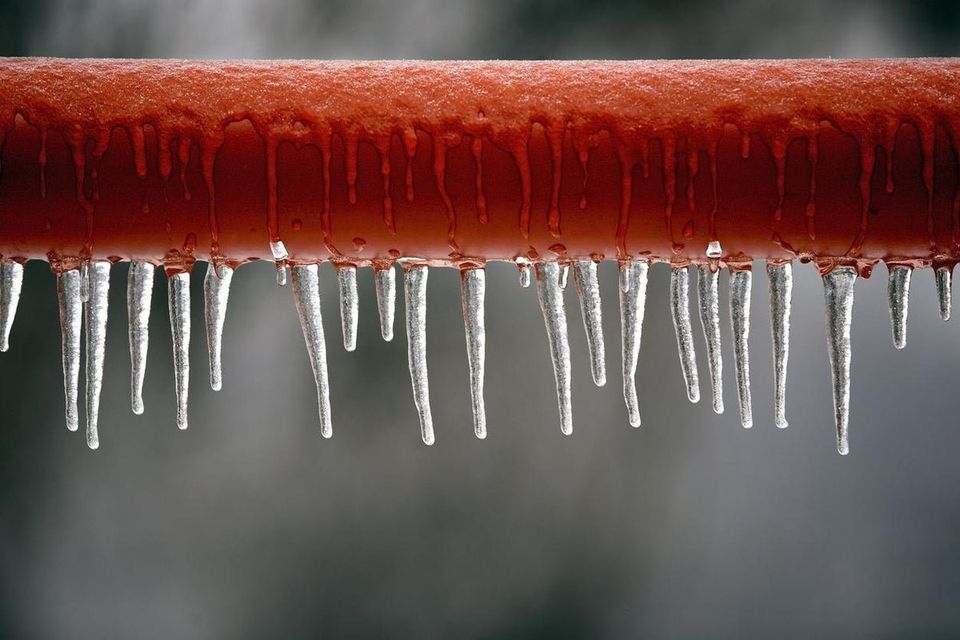How to Defend Your Pipes from Cold Weather: Professional Guidance
How to Defend Your Pipes from Cold Weather: Professional Guidance
Blog Article
We have uncovered this great article pertaining to Prevent Frozen Pipes down the page on the internet and figured it made sense to write about it with you on this page.

Winter can damage your plumbing, particularly by freezing pipes. Below's just how to avoid it from occurring and what to do if it does.
Introduction
As temperatures drop, the threat of frozen pipes rises, possibly resulting in pricey repair services and water damage. Comprehending just how to prevent frozen pipes is critical for home owners in chilly environments.
Comprehending Frozen Pipes
What triggers pipelines to ice up?
Pipes freeze when exposed to temperatures below 32 ° F (0 ° C) for expanded periods. As water inside the pipes ices up, it expands, taxing the pipe walls and potentially triggering them to rupture.
Risks and damages
Frozen pipes can result in water system disturbances, residential property damage, and expensive repair work. Burst pipelines can flooding homes and cause considerable structural damages.
Indicators of Frozen Pipeline
Determining icy pipes early can prevent them from breaking.
Just how to determine frozen pipelines
Look for reduced water flow from taps, uncommon smells or noises from pipelines, and visible frost on exposed pipelines.
Avoidance Tips
Shielding susceptible pipelines
Wrap pipes in insulation sleeves or utilize heat tape to protect them from freezing temperature levels. Concentrate on pipes in unheated or exterior locations of the home.
Heating techniques
Maintain indoor rooms appropriately heated, particularly areas with pipes. Open up cupboard doors to enable cozy air to distribute around pipelines under sinks.
Shielding Exterior Pipes
Yard tubes and exterior taps
Detach and drain pipes yard tubes prior to winter season. Set up frost-proof spigots or cover outdoor taps with shielded caps.
What to Do If Your Pipes Freeze
Immediate activities to take
If you believe icy pipes, keep taps available to ease pressure as the ice thaws. Utilize a hairdryer or towels taken in hot water to thaw pipelines gradually.
Long-Term Solutions
Structural changes
Think about rerouting pipes far from exterior walls or unheated locations. Add additional insulation to attics, cellars, and crawl spaces.
Upgrading insulation
Buy top quality insulation for pipes, attic rooms, and walls. Appropriate insulation helps preserve consistent temperature levels and decreases the threat of frozen pipes.
Conclusion
Preventing frozen pipelines calls for proactive procedures and fast reactions. By recognizing the reasons, signs, and preventive measures, homeowners can safeguard their pipes throughout winter.
5 Ways to Prevent Frozen Pipes
Drain Outdoor Faucets and Disconnect Hoses
First, close the shut-off valve that controls the flow of water in the pipe to your outdoor faucet. Then, head outside to disconnect and drain your hose and open the outdoor faucet to allow the water to completely drain out of the line. Turn off the faucet when done. Finally, head back to the shut-off valve and drain the remaining water inside the pipe into a bucket or container. Additionally, if you have a home irrigation system, you should consider hiring an expert to clear the system of water each year.
Insulate Pipes
One of the best and most cost-effective methods for preventing frozen water pipes is to wrap your pipes with insulation. This is especially important for areas in your home that aren’t exposed to heat, such as an attic. We suggest using foam sleeves, which can typically be found at your local hardware store.
Keep Heat Running at 65
Your pipes are located inside your walls, and the temperature there is much colder than the rest of the house. To prevent your pipes from freezing, The Insurance Information Institute suggests that you keep your home heated to at least 65 degrees, even when traveling. You may want to invest in smart devices that can keep an eye on the temperature in your home while you’re away.
Leave Water Dripping
Moving water — even a small trickle — can prevent ice from forming inside your pipes. When freezing temps are imminent, start a drip of water from all faucets that serve exposed pipes. Leaving a few faucets running will also help relieve pressure inside the pipes and help prevent a rupture if the water inside freezes.
Open Cupboard Doors
Warm your kitchen and bathroom pipes by opening cupboards and vanities. You should also leave your interior doors ajar to help warm air circulate evenly throughout your home.
.jpg)
As a keen person who reads about Preventing and dealing with frozen pipes, I imagined sharing that post was a smart idea. Sharing is good. Who knows, you may be helping someone out. Bless you for your time. Revisit us soon.
Book A Free Estimate Report this page